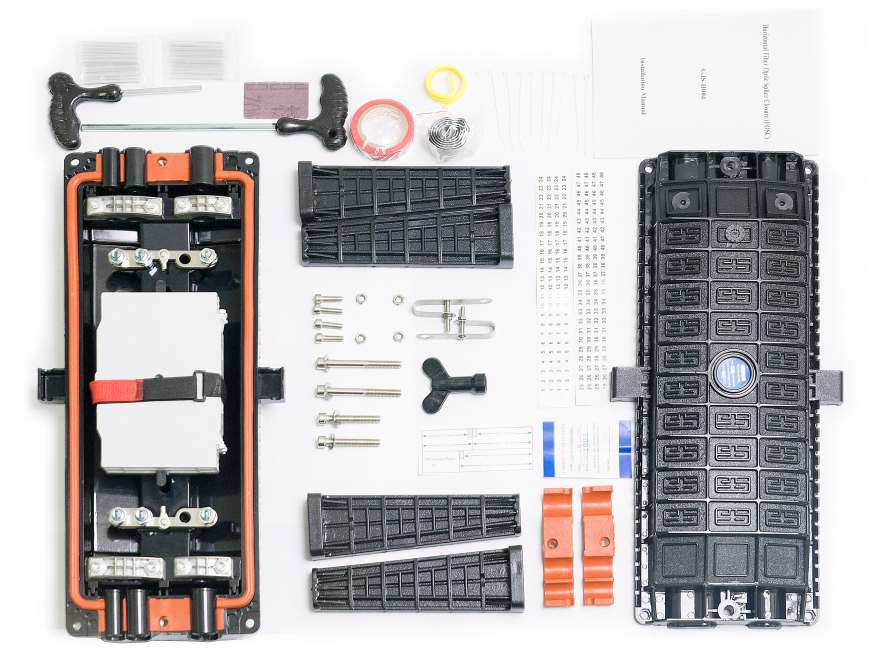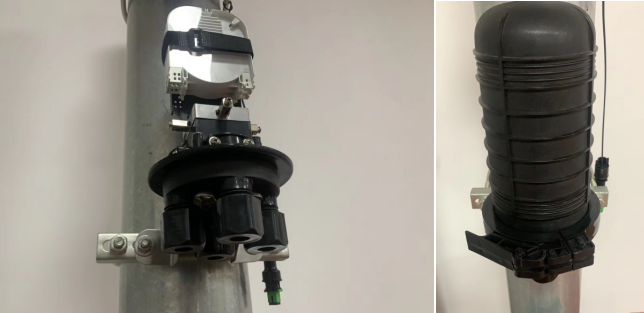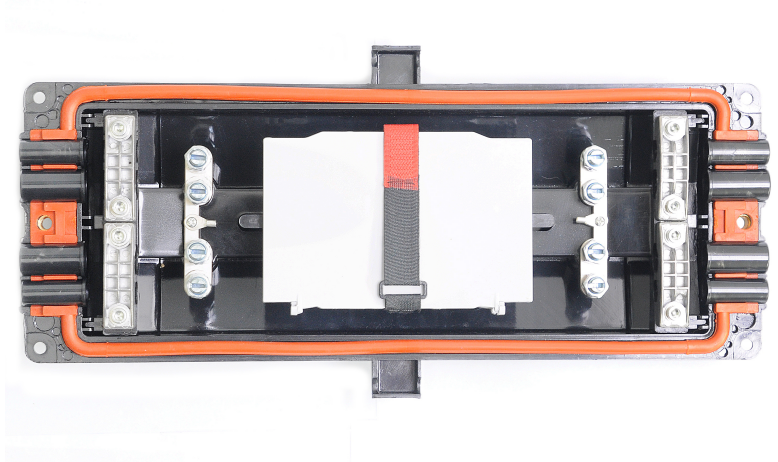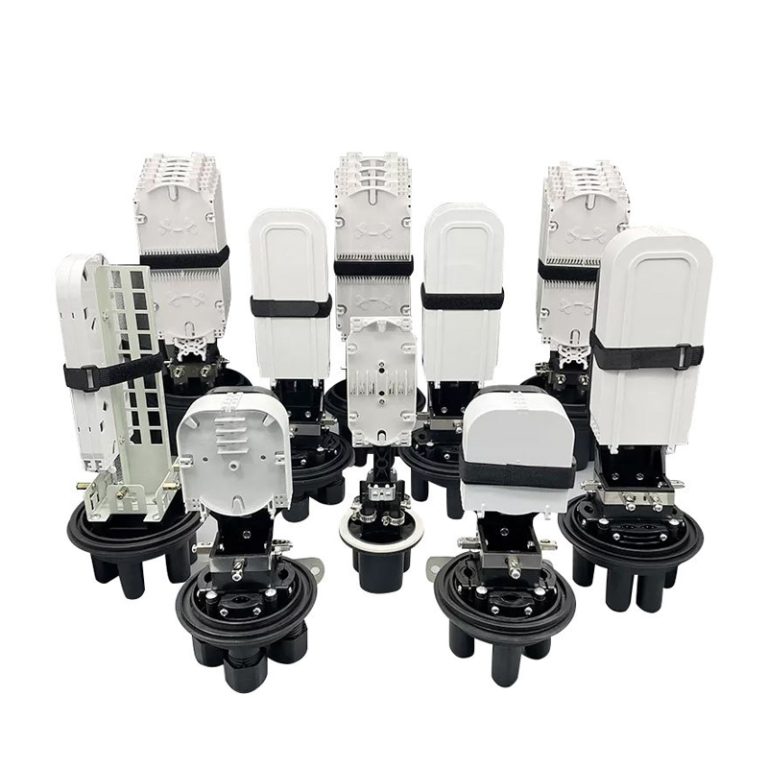Fiber optic splice enclosure play a vital role in maintaining the integrity and reliability of fiber optic connections in a variety of applications, including telecommunications, data centers and industrial networks.
Fiber optic splice enclosures are protective enclosures used to house and protect fiber optic cable splices or connections. It is designed to provide a safe and controlled environment for splicing optical fibers, protecting them from environmental factors such as moisture, dust and physical damage. The fiber optic splice enclosure usually consists of a sturdy box or cabinet made of materials that are highly durable and resistant to harsh conditions. It may include features such as seals, gaskets, and locking mechanisms to ensure proper sealing and security. Fiber optic splice enclosure are often equipped with cable entry and exit points to facilitate the routing of fiber optic cables. Inside the enclosure are trays or brackets that hold and organize fiber optic splices or connections for easy access and maintenance. Overall, fiber optic splice boxes play a vital role in maintaining the integrity and reliability of fiber optic connections in a variety of applications, including telecommunications, data centers, and industrial networks.
The purpose of fiber optic splice enclosure
The primary purpose of fiber optic splice enclosure is to protect fragile fiber optic cables and splices from environmental factors such as moisture, dust, temperature fluctuations, and physical damage. It also helps maintain the integrity of your fiber optic network by preventing signal loss and maintaining optimal performance.
Fiber optic splice enclosures are typically made from durable materials, such as high-quality plastic or metal. They are designed to be weatherproof and withstand a wide range of environmental conditions, making them suitable for both indoor and outdoor installations.
These fiber optic splice enclosures provide ample space for splicing optical fibers together, allowing technicians to establish safe and reliable connections. They also provide protection to the joints from any accidental damage that may occur during maintenance or repairs.

Types of fiber optic splice enclosure
There are different types of fiber optic splice enclosures available, including dome boxes, inline boxes, and wall-mounted boxes. Dome closures are typically used in aerial or underground applications, while inline closures are suitable for direct burial or pipeline applications. Wall-mounted enclosures are typically used for indoor installations.
Advantages of fiber optic splice enclosures:
1.Protection: The main advantage of fiber optic splice enclosures is their ability to protect fiber optic connections from environmental factors such as moisture, dust, and physical damage. This ensures the integrity and reliability of the fiber optic network.
2.Easy Access: Fiber optic splice enclosures are designed to provide easy access to fiber optic cables and connections for maintenance and repairs. This allows for efficient troubleshooting and reduced downtime.
3.Flexibility: These fiber optic splice enclosures come in a variety of sizes and configurations, providing the flexibility to accommodate different types and quantities of fiber optic cables. They can be easily extended or modified to meet changing network needs.
4.Security: Fiber optic splice enclosures often come with a locking mechanism to prevent unauthorized access. This adds an extra layer of security to the fiber connection, preventing tampering or theft.

Disadvantages of fiber optic splice enclosures:
- Cost: Fiber optic splice enclosures can be expensive, especially if large quantities are required. The cost of purchasing and installing these enclosures should be considered when planning a fiber optic network.
- Space Requirements: These fiber optic splice enclosures require physical space to install. In areas with limited space, finding the right cabinet location can be a challenge.
- Maintenance: Although fiber optic splice enclosures are designed to be rugged and require minimal maintenance, they still require regular inspection and cleaning to ensure optimal performance.
In summary, fiber optic splice enclosures provide the necessary protection and accessibility for fiber optic connections. Despite their cost and space requirements, their advantages in protection, ease of access, flexibility and security make them a critical component in ensuring the reliability and longevity of fiber optic networks.
The future development of fiber optic splice enclosure technology
In terms of technological advancements, future developments in fiber optic splice enclosure technology focus on improving efficiency, reliability and ease of installation. One of the latest advancements is the use of modular cabinets that can be easily expanded and reconfigured as network needs change. These fiber optic splice enclosures can accommodate multiple connectors or connections, making them highly flexible and expandable.

Another development is the integration of advanced sealing technologies and materials to enhance the case’s water and dust resistance. This ensures that fiber optic splice enclosures are protected even in extreme weather conditions or industrial environments.
Additionally, advances in enclosure design are focused on reducing installation time and complexity. These include features such as tool-less installation, snap-on connectors and a pre-installed cable management system that simplify the installation process and save technicians valuable time.
Overall, future developments in fiber optic splice enclosure technology aim to provide more robust, efficient and user-friendly solutions to meet the growing demand for high-speed, reliable fiber optic networks.



